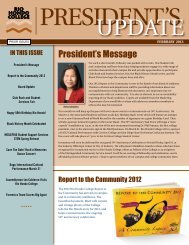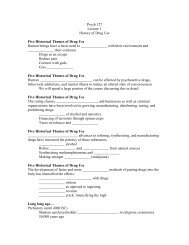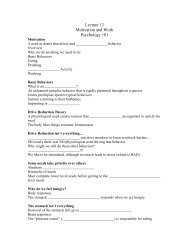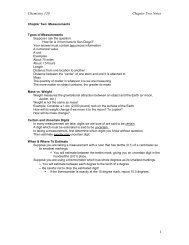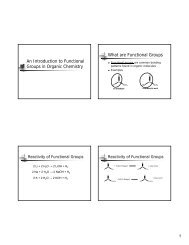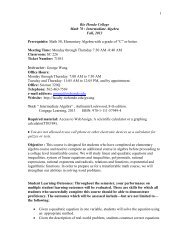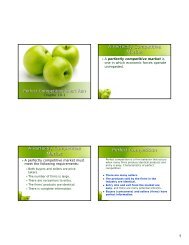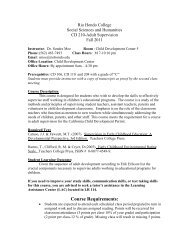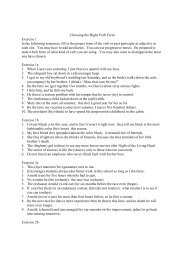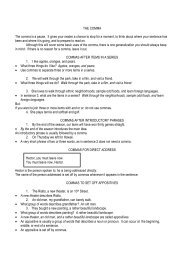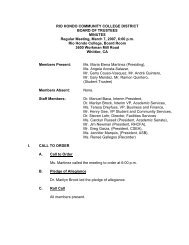Green Building and LEED Core Concepts Guide First Edition
Green Building and LEED Core Concepts Guide First Edition
Green Building and LEED Core Concepts Guide First Edition
Create successful ePaper yourself
Turn your PDF publications into a flip-book with our unique Google optimized e-Paper software.
Assessments <strong>and</strong> Measurements<br />
To evaluate the performance of site-related strategies, the following measures<br />
<strong>and</strong> metrics can be used . Someofthese,likecommunityconnectivity,arequalitative<br />
measures, while others lend themselves to quantitative measurement, such as the solar reflectance<br />
rating of a surracc or the number offootc<strong>and</strong>les of lighting.<br />
• Brownfield. Previously used or developed l<strong>and</strong> that may be contaminated with hazardous<br />
waste or pollution. Once any environmental damage has been remediated, the l<strong>and</strong> can be<br />
reused. Redevelopment on brownflelds provides an important opportunity to restore degraded<br />
urban l<strong>and</strong> while promoting infill <strong>and</strong> reducing sprawl.<br />
• Community connectivity. The amount of connection between a site <strong>and</strong> the surrounding<br />
community, measured by proximity of the site to homes, schools, parks, stores, restaurants,<br />
medical facilities, <strong>and</strong> other services <strong>and</strong> amenities.<br />
• Development density. The total square footage of all buildings within a particular area,<br />
measured in square feet per acre or units per acre.<br />
• Diversity of uses or housing types. The number of types of spaces or housing types per acre.<br />
A neighborhood that includes a diversity of uses--offices, homes. schools, parks, storesencourages<br />
walking. <strong>and</strong> its residents <strong>and</strong> visitors are less dependent on personal vehicles.<br />
A diverSity of housing types allows households of different types, sizes, ages, <strong>and</strong> incomes to<br />
live in the same neighborhood.<br />
• Floodplain. L<strong>and</strong> Ihal is likely to be flooded by a storm of a given size (e.g., a 100-year<br />
storm).<br />
• Floor-area ratio. The relationship between the total building floor area <strong>and</strong> the allowable l<strong>and</strong><br />
area the building can cover. In green building, the objective is to build up rather t han out<br />
because a smaller footprint means less disruption of the existing or created l<strong>and</strong>scape.<br />
• Footc<strong>and</strong>le. A measure of the amount of illumination falling on a surface. A footc<strong>and</strong>le is<br />
equal to one lumen per square foot. Minimizing the number of footc<strong>and</strong>les of site lighting<br />
helps reduce light pollution <strong>and</strong> protect dark skies <strong>and</strong> nocturnal animals.<br />
• Imperviousness. The resistance of a material to penetration by a liquid. The tota l<br />
imperviousness of a surface, such as paving, is expressed as a percentage of total l<strong>and</strong><br />
area that does not allow moisture penetration. Impervious surfaces prevent rainwater from<br />
infiltrating into the ground, thereby increasing runoff, reducing groundwater recharge, <strong>and</strong><br />
degrading surface water quality.<br />
• Native <strong>and</strong> adapted plants. Native plants occur naturally in a given location <strong>and</strong> ecosystem.<br />
Adapted plants are not native to a location but grow reliably with minimal attention from<br />
humans. Using native <strong>and</strong> adapted plants can reduce the amount of water required for<br />
irrigation, as well as the need for pesticides or fertilizers, <strong>and</strong> may provide benefits for local<br />
wildlife.<br />
• Prime farml<strong>and</strong>. Previously undeveloped l<strong>and</strong> with so il su itab le for cultivation. AV9iding<br />
development on prime farml<strong>and</strong> helps protect agricultural l<strong>and</strong>s, which are needed for food<br />
production.<br />
• Site disturbance. The amount of a site that is disturbed by construction activity. On<br />
undeveloped sites, limiting the amount <strong>and</strong> boundary of site disturbance can protect<br />
surrounding habitat.<br />
• Solar reflectance index (SRI). A measure of how well a material rejects solar heal; the index<br />
ranges from a {least reflective} to 100 (most reflective). Using "cooler" materials helps<br />
prevent the urban heat isl<strong>and</strong> effect (the absorption of heat by roofs <strong>and</strong> pavement <strong>and</strong> its<br />
radiation to the ambient air) <strong>and</strong> minimizes dem<strong>and</strong> for cooling of nearby buildings.<br />
• Street grid density. An indicator of neighborhood density, calculated as the number of<br />
centerline miles per square mile. Centerline miles are the length of a road down its center. A<br />
26<br />
<strong>Green</strong> <strong>Building</strong> <strong>and</strong> <strong>LEED</strong> Cofe <strong>Concepts</strong> <strong>Guide</strong>



